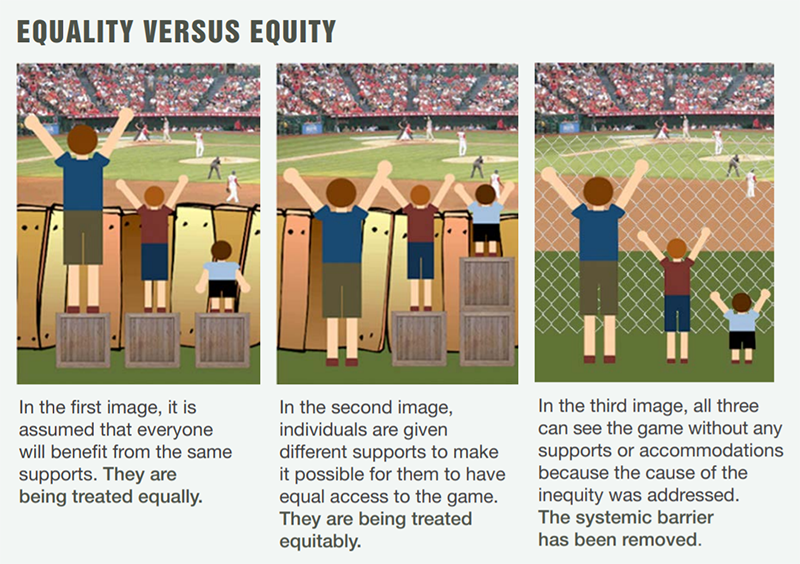As a support network for neurodivergent police officers and staff, one of our most frequently-asked questions concerns reasonable adjustments. A reasonable adjustment is defined as a change in the workplace to remove or reduce the effect of an employee or job applicant’s disability, when carrying out or applying for a job. Disabled employees and applicants, including* those with neurodivergent conditions such as autism and dyslexia, are entitled to reasonable adjustments under the Equality Act to help them overcome the limitations of their disability or condition at work or in seeking employment.
An important concept in the reasonable adjustment process is that it is sometimes necessary to treat people differently in order to provide everyone with an equal opportunity to succeed. This is best illustrated by the following graphic, created by the Canadian City for All Women Initiative:

The first image shows what can happen when everyone is treated equally – some people will lose out due to the effect of their disability or other protected characteristic. The second image shows equity, or fairness, and how this differs from equality – by giving some people additional support, everyone has an equal chance of success.
Reasonable adjustments in selection and promotion processes are sometimes misunderstood as ‘special treatment’ that gives some people an unfair advantage (and therefore disadvantages others). It’s important to understand that adjustments are there to ensure that disabled and neurodivergent applicants have the same chance of success as everyone else – the second image in the graphic. A typical example is wording the interview questions for an autistic candidate to remove any ambiguity, and allowing the candidate to have each question in writing to refer to when they provide their answer. Research by the University of Bath has shown that autistic interviewees can over-analyse or misinterpret questions and struggle to mentally organise their evidence to fit what is being asked – adjusting the style of questions, providing thinking time and written prompts allows the candidate to overcome these difficulties and present themselves as well as other applicants. (Candidates with dyslexia and other neurodivergent conditions may also benefit from these adjustments.)
Continuing the example of workplace interviews, some employers have gone a step further by providing all candidates with neurodivergent-friendly questions, preparation time and written prompts. This is an example of the third image in the graphic – removing the systemic barrier so that no one is disadvantaged or needs to ask for adjustments. With a little thought and effort, this approach can be applied to any workplace environment, process or culture – and as with the interview example, it has the potential to benefit everyone, disabled or not. ∎
*Neurodivergent conditions may meet the criteria of a disability – assessed on an individual basis
